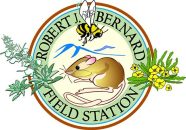Noto, Akana (2009)
Invasibility of Coastal Sage Scrub: The Impacts of Seed Predation, Allelopathy, and Shading on Success of an Invasive Species.
Bachelor of Arts, Pomona College, Biology.
Advisor: Frances Hanzawa.
A plant community’s invasibility determines the success of non-native species. Disturbed areas are often more invasible than intact communities. In disturbed plant communities, this may be due to reduced seed predation, fewer allelochemicals or increased resource availability. I studied the invasibility of coastal sage scrub (CSS) communities through field and greenhouse experiments examining the effects of seed predation, allelopathy and shade on the invasive Maltese star thistle, Centaurea melitensis. Seed predation rates in disturbed and intact areas were similar, although they were somewhat higher in intact areas, perhaps due to the main seed predator in intact areas, rodents, being more effective seed predators than the main seed predator in disturbed areas, ants. Extracts of three common CSS shrubs – Artemisia californica, Eriogonum fasciculatum and Eriodictyon trichocalyx – inhibited star thistle germination and growth, but A. californica had the strongest effect. When star thistle seeds were planted in the field beneath A. calfornica and E. trichocalyx, as well as in open areas and beneath shade structures, A. calfornica inhibited germination, but shading and E. trichocalyx had little effect. Allelopathy due to A. californica therefore likely plays a role in reducing CSS invasibility. Lower overall fitness of star thistle seeds in intact CSS compared to disturbed areas suggests that seed predation and A. californica allelopathy reduce invasibility of intact CSS.
